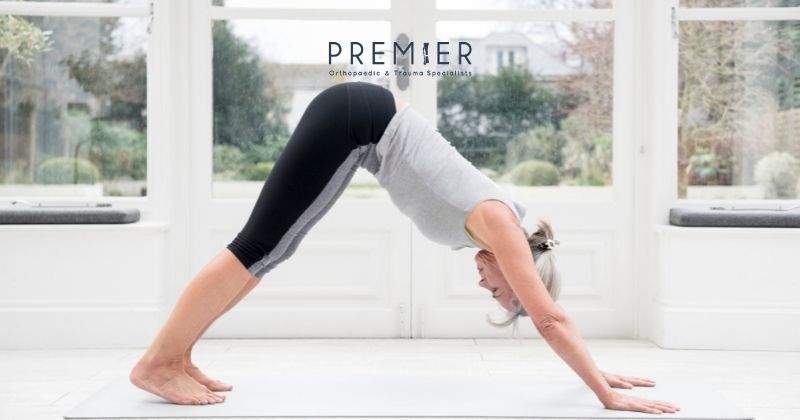Fighting Arthritis with Exercise

Arthritis is a degenerative disorder of the joints that can eventually lead to a great deal of pain and disability as it becomes more severe. Therefore, many patients who are experiencing arthritis shy away from exercise as, in the beginning, it can be somewhat, or very, painful.
However, exercise and arthritis relief actually go hand in hand. It has been proven that those with arthritis, who exercise on a regular basis, experience less disability, less pain and more energy. Those who exercise regularly may also improve other aspects of their lives including their cardiovascular health and metabolic disease. In fact, HHS estimates that about seven in 10 of the most common chronic diseases from which Americans suffer can be improved with proper physical activity. If the arthritis is degenerative – due to wear and tear, losing weight as a result of improved exercise programs, may slow the progression of osteoarthritis.
Exercises to avoid with arthritis
With that being said, every exercise is not necessarily good exercise for those suffering from arthritis. Certain patients will have stiffness or balance issues as a result of arthritis. This is typically worse early on in the exercise regimen and could cause injury if the exercise plan is pursued too vigorously. Further, most patients experiencing arthritis should avoid high impact exercises, like running on concrete.
Best exercises with arthritis
- Some of the best exercises that arthritic patients can pursue include stretching and balance like yoga, Pilates and other exercises that improve range of motion without causing significant impact.
- Weight training can also improve muscle function, increase ability and reduce pressure on the joints. There is a fine balance between lifting enough weight and not lifting so much that the joints are actually further damaged. You will likely remember resistance bands from prior physical therapy sessions. These are an excellent start. You can then graduate to free weights for more intense exercise as your physical therapist or orthopedic surgeon allows.
- Swimming is yet another excellent, low impact exercise that can improve muscle, work the heart and typically does not lead to injury. However, remember that proper technique must always be used when swimming, as improper form can cause other joint problems.
- Some patients may even be able to play golf or tennis, though this should be discussed with your orthopedic surgeon and depends on the severity and location of the arthritis.
The mind makes a difference
Mental health is also an important component in living with arthritis. It is very easy to fall into a state of frustration and depression, but ultimately that does not change our physical circumstances. Rather, prioritizing mental health through meditation, relaxation techniques and even therapy if necessary, can be a great way to improve mental and physical health.
How much exercise is enough?
The most important concept here is to start slow. Even 5-10 minutes of activity can be enough in the beginning. Longer-term, approximately two to three hours of total, moderate intensity exercise over the course of the week is often sufficient. It is best if this exercise is performed a little each day or every other day rather than all at once. Of course, if you ever experience lasting discomfort as a result of your exercise, stop performing that exercise and speak to your orthopedic surgeon to get more guidance
The first step, of, course, is to understand more about your disease and whether you may need medical or surgical intervention to slow or stop its progression. We encourage you to schedule a consultation with one of our orthopedic surgeons.


 ES
ES